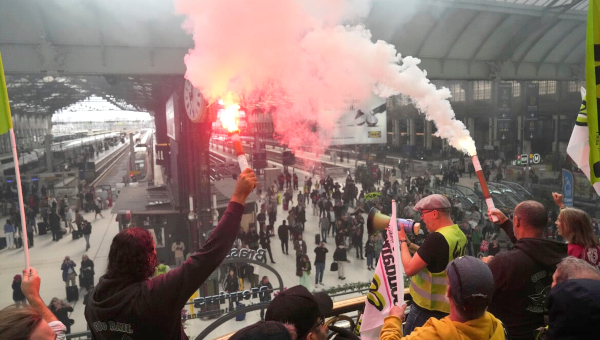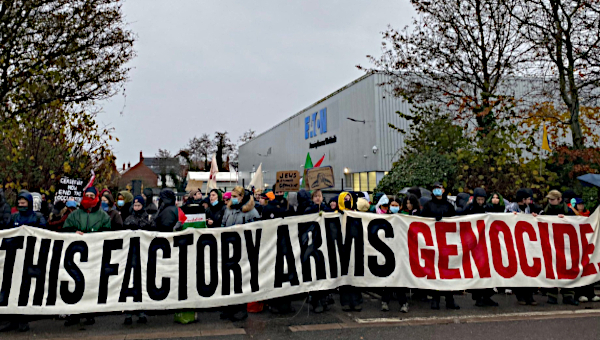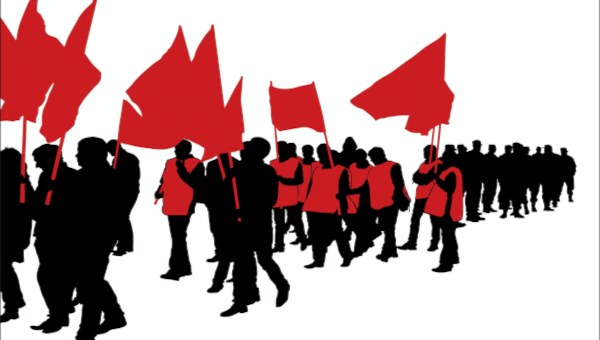The CAW’s Direction: Some Questions
A number of questions about the CAW’s general political and more specific electoral orientation are being asked both inside and outside the union. These are questions of importance to the Canadian Left as a whole. We cite a few such questions and invite comment.
First, coming out of GM bargaining in October, 2005 the union proudly declared that GM had agreed to limit job losses to 1700 due to ‘efficiencies.’ Within a few short weeks – and with
nothing changing that wasn’t known – GM announced some 3,000 additional job losses including the closure and loss of a shift at its two best plants in North America (measured in terms of productivity, quality and a $10/hr cost advantage relative to the U.S.). Yet the union offered no criticism of GM. Where was the union’s anger or sense of betrayal? Where was any challenge to the neoliberal promise that competitiveness brought job security?
Furthermore, the CAW had virtually led the lobbying to get GM $450-million in public funds to save jobs. Again, what happened to the job guarantees? It might have been too much to expect the union to admit the failure of its policy, but why – having gone in this mistaken direction – did it at least not challenge GM and call for withholding that subsidy until the company reversed its decision?
Second, the subsidies policy has led the union to also publicly support subsidies for Toyota. But is there no concern that such a further increase in North American capacity will only lead to further job losses at the Big Three plants?
Third, the CAW has recently joined the Big Three call to open up the Japanese and South Korean markets. But how does this help workers here? Even if those market were fully open, won’t they
be met with either direct Big Three investment into Japan and S. Korea, or from facilities in China and the rest of S. E. Asia? Doesn’t making such an argument further legitimate free trade,
in contrast to arguments against free trade based on using the leverage of our market to regulate investment? (When the Liberals called for free trade agreements with S. Korea and Japan, the
union was trapped into rightly – but uncomfortably and confusingly – rejecting such agreements).
Fourth, the CAW recently held a conference of auto parts workers that passed a strong resolution against concessions – a very positive and commendable initiative. Yet questions remain about concessions that have already been made, and about the definition of concessions: will only wages and benefits be treated as concessions and attacks on hours and working conditions ignored? In the airlines, the CAW did give up significant workplace gains won in earlier periods, but refused to consider this ‘concessions’ (the issue here is not whether the union really had any choice in that tough round of bargaining – some felt that the union should have politicized the issue by reviving its demand for public ownership – but where the line will now be drawn). In any case, the test will be in whether this important conference will be followed up by education, mobilization, and support for, and encouragement of, local struggles.
It is this larger context which frames the argument surrounding strategic (tactical) voting. In part at least, this has emerged because the NDP has itself become a pragmatic
party and so inadvertently invites pragmatic responses even from its own constituencies. In the absence of a system of proportional representation – once emphasized by unions and the
NDP but now ignored – controversies over strategic voting will therefore continue to resurface at election time. But the context in which this was announced by the CAW, has not surprisingly
raised suspicions amongst people both inside and outside the union about the leadership’s actual agenda.
Why the panic over a possible Harper victory and the action now, when polls showed Harper significantly behind? Why was this decision – which can only be carried out with collective discipline – not preceded by a discussion with other unions? Why was there no prior consultation/discussion with the much-heralded CAW’s formation of local political action committees? Why was Jack Layton not there at the same time as Martin? Why was Martin there at all, since the strategy could have been decided without him? Why the embarrassment of the big mutual hug and beaming faces, of the ceremony and symbolism of putting a CAW jacket on the shoulders of a Liberal Prime Minister – all photo ops and references that Martin, to no-one’s great surprise, exploited to the hilt in southern Ontario and against the NDP? But above all, was this really about what was best for the Canadian working class – a legitimate debate – or simply about a new relationship to the Liberals and more subsidies to the auto industry?
Will we see the same turn provincially in Ontario, and for much the same reasons, with regards to support for McGuinty? Is that what the CAW’s apparent reluctance – at least to
date – to criticize McGuinty, and especially to speak out publicly against P3s is about?
The over-riding issue is whether there has been a turn within the CAW toward the center or center right. Such a political shift would not be a unique occurrence amongst formerly
progressive individuals and institutions (including, it should be added, among social democratic parties themselves). In such instances, the common defense has been to redefine
the nature of being ‘left’ today, and insist that only tactics, and not principles and goals, have changed. However, observing this through recent events makes it hard to accept that expectations and possibilities at that top have not been lowered. It is certainly true that many of the union’s official policies remain very progressive, but this is now overshadowed by the impact on all perspectives in the union of the centrality of corporate subsidies for auto, as well as the growing emphasis on ‘elite politics’ as opposed to confidence in the independent ideological and organizational potentials of the membership. No-one would, of course, argue against meeting company and state officials; the issue is whether such lobbying has come to replace pressures from below rather than complementing such mobilization.
This debate will be clarified in the months to come, but more than confirming who is right is at stake; the most important question – and one that will have a crucial impact on the direction of the Canadian labour movement as a whole – is what role the CAW’s own rank-and-file and rich cadre of activists, developed and nurtured through struggles and the union’s still impressive educational programs, will play. Will they simply wait to see the outcome, or become a decisive factor in its determination? •
Sam Gindin teaches political economy at York University, Toronto and is the former chief economist for the Canadian Auto Workers.





